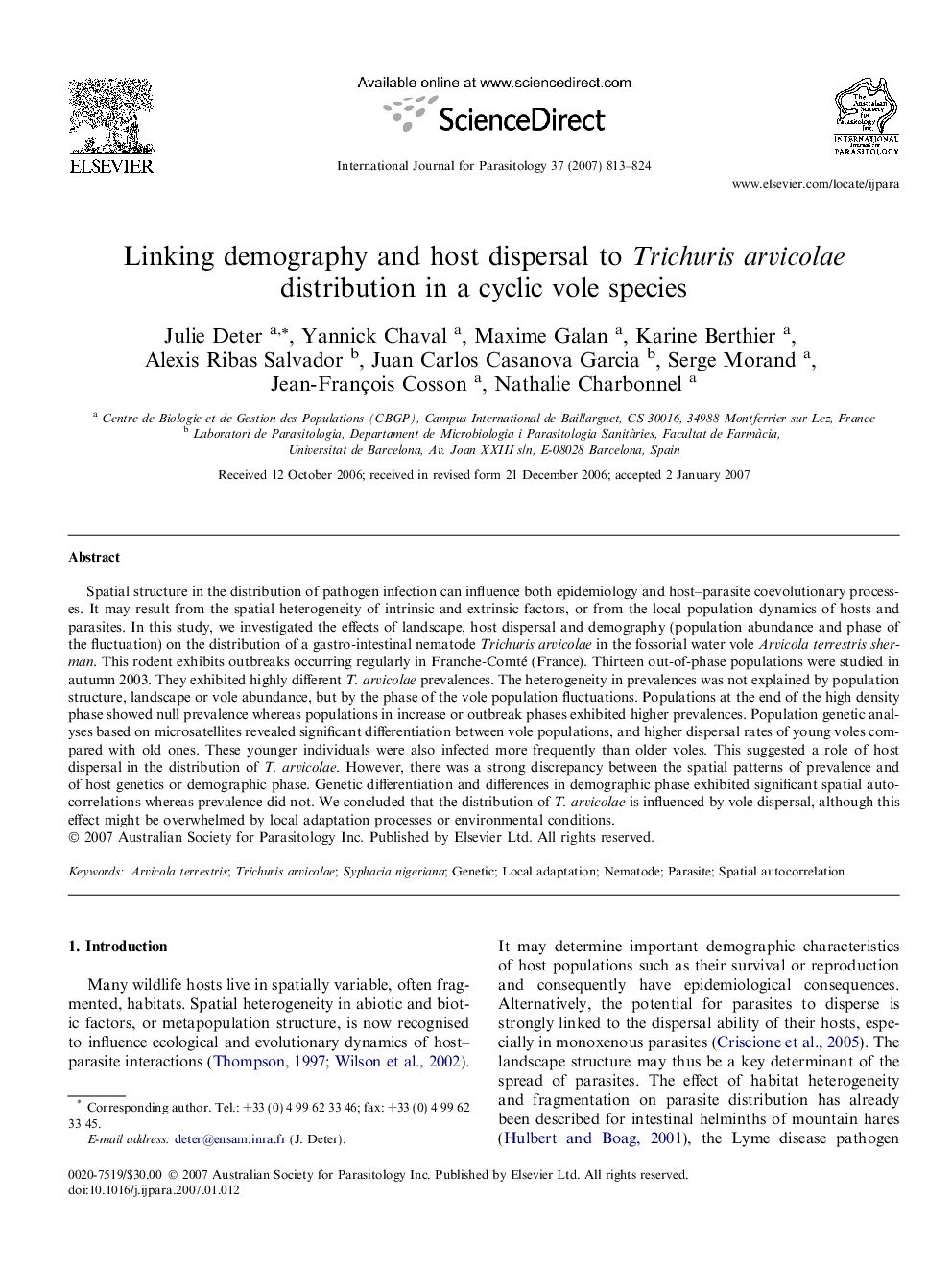| کد مقاله | کد نشریه | سال انتشار | مقاله انگلیسی | نسخه تمام متن |
|---|---|---|---|---|
| 2436778 | 1107353 | 2007 | 12 صفحه PDF | دانلود رایگان |

Spatial structure in the distribution of pathogen infection can influence both epidemiology and host–parasite coevolutionary processes. It may result from the spatial heterogeneity of intrinsic and extrinsic factors, or from the local population dynamics of hosts and parasites. In this study, we investigated the effects of landscape, host dispersal and demography (population abundance and phase of the fluctuation) on the distribution of a gastro-intestinal nematode Trichuris arvicolae in the fossorial water vole Arvicola terrestris sherman. This rodent exhibits outbreaks occurring regularly in Franche-Comté (France). Thirteen out-of-phase populations were studied in autumn 2003. They exhibited highly different T. arvicolae prevalences. The heterogeneity in prevalences was not explained by population structure, landscape or vole abundance, but by the phase of the vole population fluctuations. Populations at the end of the high density phase showed null prevalence whereas populations in increase or outbreak phases exhibited higher prevalences. Population genetic analyses based on microsatellites revealed significant differentiation between vole populations, and higher dispersal rates of young voles compared with old ones. These younger individuals were also infected more frequently than older voles. This suggested a role of host dispersal in the distribution of T. arvicolae. However, there was a strong discrepancy between the spatial patterns of prevalence and of host genetics or demographic phase. Genetic differentiation and differences in demographic phase exhibited significant spatial autocorrelations whereas prevalence did not. We concluded that the distribution of T. arvicolae is influenced by vole dispersal, although this effect might be overwhelmed by local adaptation processes or environmental conditions.
Journal: International Journal for Parasitology - Volume 37, Issue 7, June 2007, Pages 813–824